Maurizio Sarri was appointed Lazio manager in the 2021/22 season, finishing fifth while implementing a significant change in their football ideas and how they manipulate the ball. Last campaign, they improved their game massively, finishing second behind Napoli — their best position since the 1999/00 season, when the Rome team won the league.
After the departure of Sergej Milinković-Savić this season, they have to adapt to other styles and profiles in midfield. They have done excellent business to replace the Serbian and add the necessary depth and youth to some positions that needed to be upgraded and refreshed.
With the help of data and video, we’re going to make an analysis of what to expect from Lazio this season: if their summer transfer window was a solid one, what else they need, and what we can expect on the pitch, tactically, with some of the new names adapting to the ones that already know how to play ‘Sarriball’.
In this tactical analysis, we will review the Transfer Window and what to expect from them in Maurizio Sarri’s tactics.
Transfer Window
In this article, first of all, we will touch on the data and transfers related to the Italian team, analysing their signings and squad depth while using our platforms to search for signings in positions we think they need to keep adding players.
The most obvious loss, and the biggest one to face this season, is Sergej Milinković-Savić. Lazio must understand that only one player can’t replace him; in fact, many have to be signed in midfield not only for his departure but also to refresh the department in youth and new profiles/names.
With the €40m they received from Al-Hilal, we take into consideration that they have used that money in other positions but are still seeking another midfielder to improve the position the most they can, as it’s the engine from Sarri’s game, mainly thanks to their off-the-ball movements.
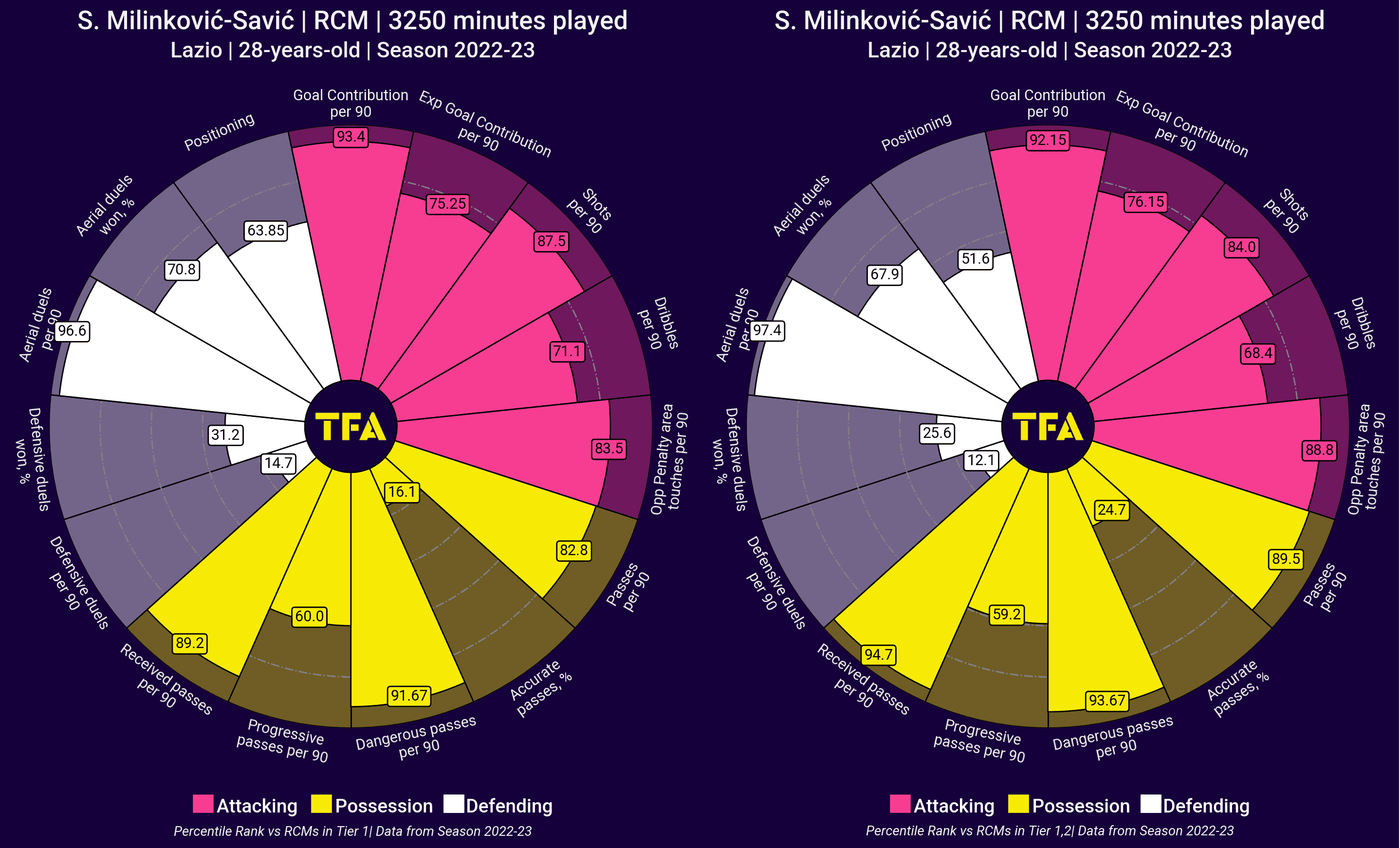
They haven’t used the money to sign Milinković-Savić’s replacement, as Daichi Kamada arrived as a free transfer, and recently, Nicolo Rovella, one of the most promising Italian midfielders, joined the Rome team.
However, only these two players make Lazio’s midfield a good one. Still, considering their squad depth, in terms of quality and age, not only to face Serie A but the Champions League, they have to be better and search for another one.
In this case, we will use ‘Team xGOLD’ to find the player who fits the most in midfield to Maurizio Sarri’s football ideas.
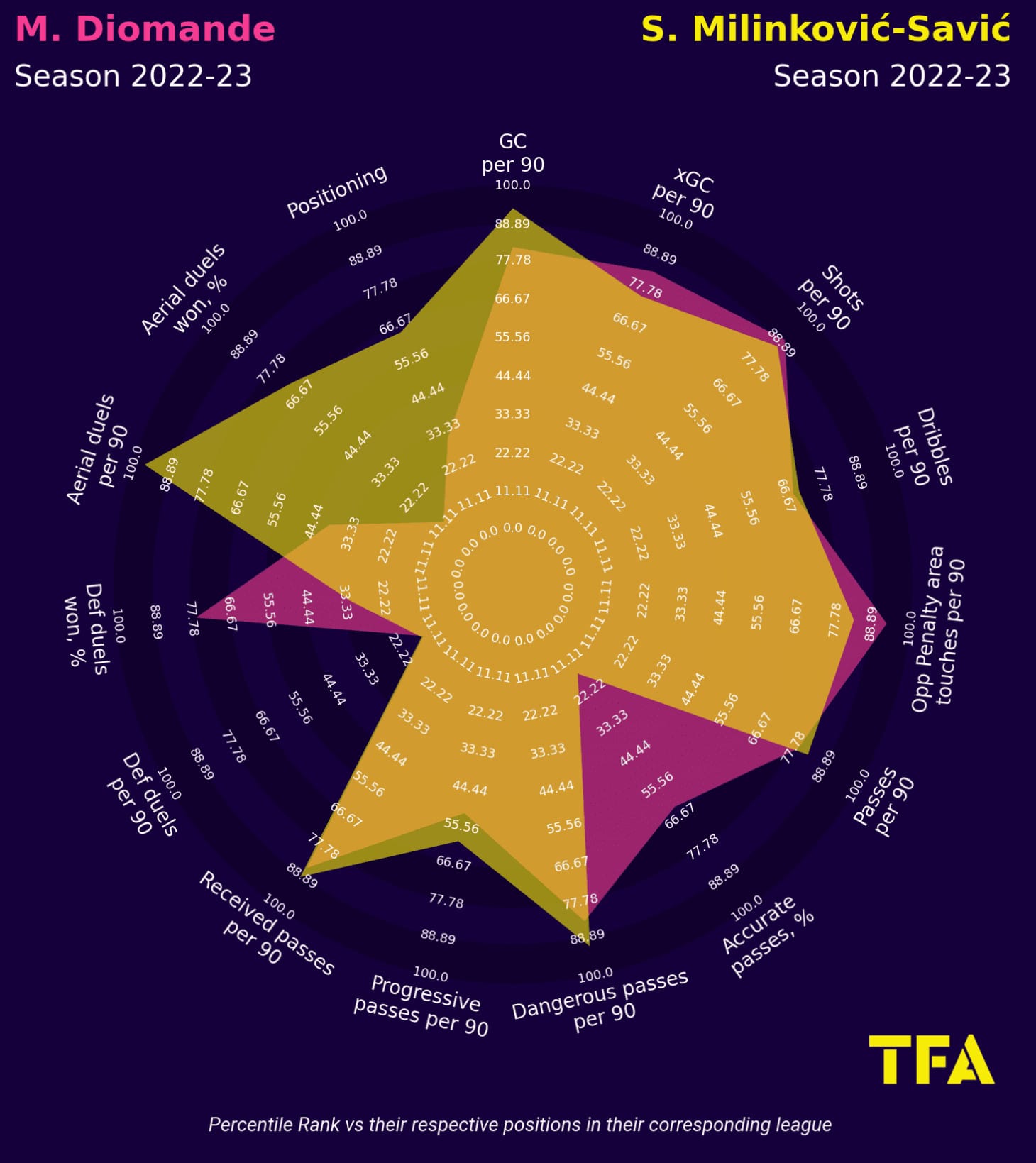
Our app recommends that Lazio should dive into the Danish Superliga, specifically to look for Mohamed Diomandé, from Nordsjaelland, with an 87% fit in the team by Team xGOLD. He’s one of the most promising players in the league, with the ability to support at different heights and attack the box with incisive and smart movements, as well as having the capacity to perform quick and first-touch passes to make the team go forward rapidly.
Moving into their other movements in the window, Lazio signed Taty Castellanos — a centre-forward — Gustav Isaksen and Matteo Cancellieri — both wingers with the same idea as Immobile — and Luca Pellegrini on loan, once again, covering the necessities on that side of the field, with Adam Marušić and Pellegrini rotating the position.
However, we have one last recommendation for a spot crucial in the Champions League and Serie A. Last season, Lazio picked up the best defence in the Top 10, just two goals behind Napoli. Alessio Romagnoli and Patric established a perfect pair, with Ivan Provedel covering the goal well and a team effort to press and switch blocks effectively, especially when sitting in a mid-block.
Besides the good performances of Romagnoli-Patric, it’s very different from what the Champions League demands from its competitors, and considering some weaknesses and the quality of the squad depth in that position, we decided to search for a young centre-back with the potential to fit in their defence and upgrade the level.

‘Team xGOLD’ selected Filipe Relvas, the left-footed Porimonense centre-back — another underrated player who could jump from their league to Lazio. With an 87% fit, Relvas is a complete player compared to Romagnoli: Better defensive and aerial success and aggressive attacking ideas, such as dribbling and progression from the back with the ball.
Concluding this section, we can finally ask ourselves: Are Lazio ready for the Champions League?
For the first time since the 2020/21 season, where they qualified for the Round of 16 and were beaten 2-6 on aggregate by FC Bayern, Lazio have returned to the competition after getting into the Europa League two times.
With the loss of Milinković-Savić, they lost a player capable of competing in the Champions League week by week. However, diving deep into what they have in the squad, they’ll need more on the level of Luis Alberto and Ciro Immobile.
Considering the defence, the left side is one of the weak spots, with Marušić and Pellegrini contributing a lot to build-up and the attack whenever they play, but with some 1v1 duel deficiencies that could be trouble in the Champions League.
Collectively, Lazio are a team that suffers a lot in defensive transitions, maybe one of the two or three main things you need at the highest level to compete, at least to get into the quarter-finals.
That’s why we, crucially, looked at a new centre-back for them, in case Sarri would look to change to a back-five in bigger games or would have to rotate.
Lazio, collectively and individually, have the tools to advance through Group Stage — and they could accomplish quarter-finals this season if everything goes well in terms of level and squad depth (injuries, more departures, etc.).
What should we expect from Lazio tactically?
Last season, Maurizio Sarri achieved a team that understood almost every movement of the ideas he wanted to implement in the Rome team. Players like Danilo Cataldi, Marcos Antonio, and many others were being rotated into the group, offering very similar performances, at least in tactical terms, moving dynamically between the lines and dragging/dismarking.
To know Sarri’s Lazio, we have to get deep into build-ups from the back, as they were the second team, only behind Napoli, that made the most passes in the 2022-23 season. The back-line is crucial in what they aim to achieve in first passes to elaborate plays from behind, with full-backs close to attracting the opposition deep into their zone, connecting with midfielders or wingers. But let’s dive deep into what the back four shows in the early build-up stages.

Alessio Romagnoli and Patric mainly bring the ball to midfielders, who have dynamic movements to drag and open spaces at different heights. A crucial point in delivering the ball, especially Patric on the right side, is their short runs to make new angles and verticalise passes into half-spaces quickly, without moving it so patiently and slowing down the tempo that much.
The full-back stretches the opposition and opens gaps in the rival’s block in central channels. However, it’s not only because of the full-backs movement, but is a primary task they have been asked to do off-the-ball, and they do it well, with Lazio able to progress from the back with Patric and Romagnoli’s executions.

Another critical movement constant in Lazio’s build-up is how midfielders and wingers understand how to release spaces and rotate positions so they can receive passes from centre-backs or full-backs in free zones to run forward.
Typically, Sarri doesn’t want advanced 8s to receive with their back to goal and neither wingers. So when Luis Alberto and Daichi Kamada (this season) move high and drag the rival’s midfielders, wingers can dismark with a diagonal body orientation to receive and run forward. This is a typical movement Bukayo Saka does at Arsenal, for example.
However, wingers and midfielders understand how to do this and read it well. To fit into Sarri’s ideas is not only a matter of the quality of the ball of the player but also the intelligence to move without the ball, especially in this position.
As all in football happens in seconds, they do it rapidly to take advantage of these spaces created to dynamise possessions with receptions between the lines.
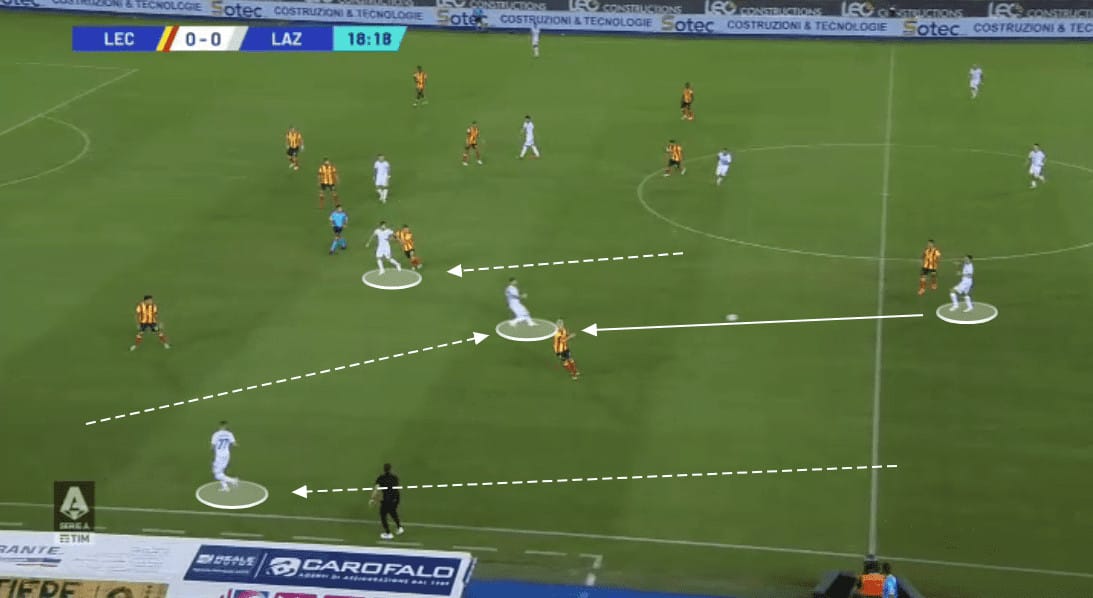
The use of Ciro Immobile is also a regular thing. Obviously, in Lazio’s attack, but in the early build-ups, he’s a focal point to verticalise with breaking passes to connect with him, which drops a few meters to receive, release and run. He’s good at receiving and knows how to dynamise the attack with his first or second-touch passes to teammates close to him.
That’s why Maurizio Sarri doesn’t want their midfielders to constantly play with their back to the goal, or at least after the pass is made into a winger/Immobile, they can turn and orient their body to the rival goal, as in the middle and final third, they look to break blocks through first-touch passes with short players, especially attackers linking with midfielders, mainly Luis Alberto who has the vision and capacity to make through passes, varying his executions and feinting the rival’s backline.
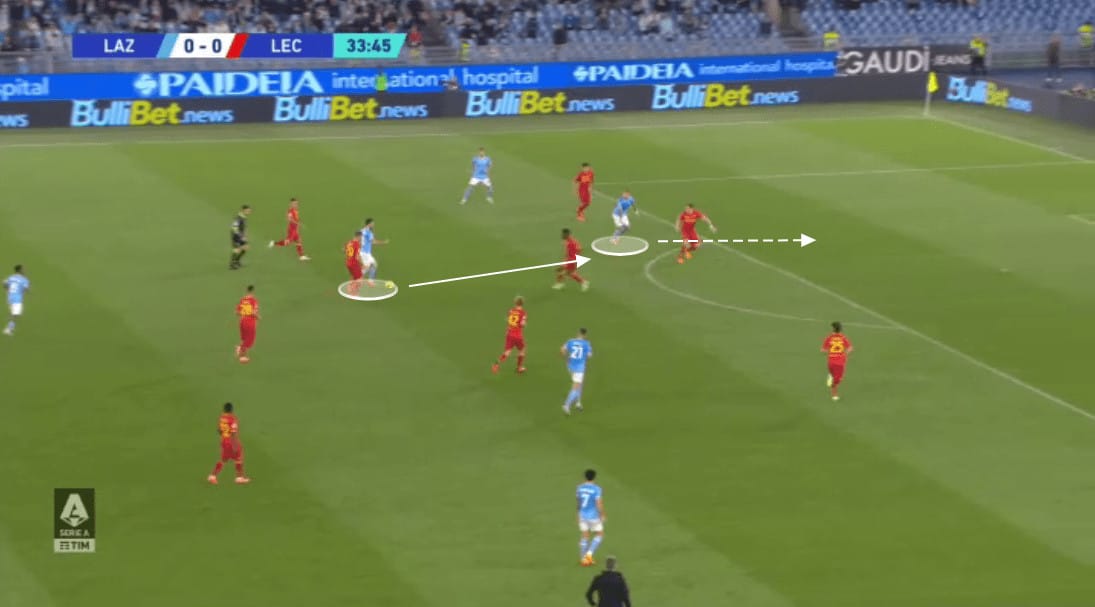
One of the surprising things of the first matchday of the 2023-24 season is how Daichi Kamada has positively adapted to Lazio, as he can contribute to arriving to the box such as Sergej Milinković-Savić, but also has understood the dynamic movements to drag and open spaces, be patient to receive the ball, and his best facet: Orientating his body diagonally to play first-touch passes to verticalise in final third and break the backline.
We must also consider Lazio’s different approaches when defending, especially switching from a high to mid-block and closing down central lanes. They create pressing traps, especially in midfield, to make the opponent think there’s a free pass into the middle, where the press intensifies to steal the ball from behind.
They also are varied to force the ball to move wide, significantly when Luis Alberto jumps off his line and pushes the centre-back to pass it to the full-back.
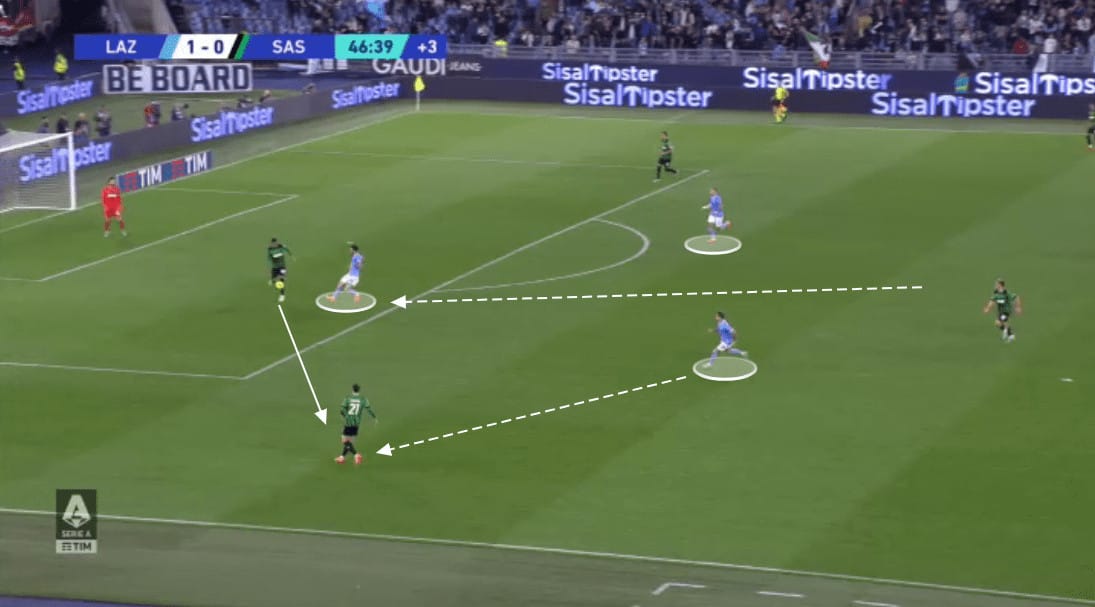
However, they have good intentions and have adapted well to switching that high press to a 4-4-2 or 4-5-1 when defending and closing down spaces to prevent the rival team from moving the ball between them.
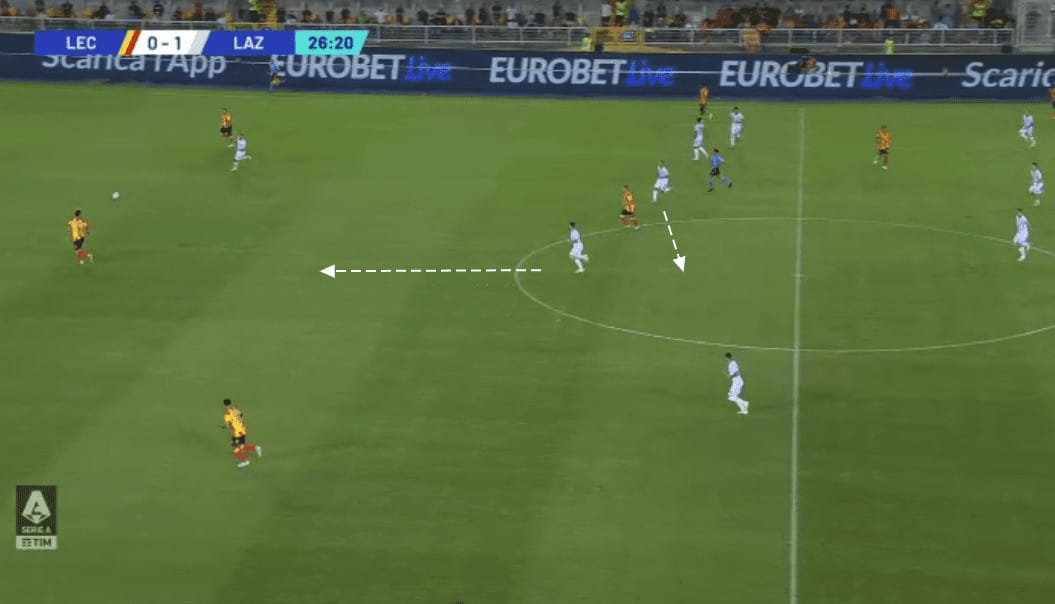
As we can see in figure 9, Luis Alberto jumps off his line to establish a double-line with Immobile forward, and Danilo Cataldi moves to the left to cover that space left behind by Alberto, with Kamada pairing in a double-pivot alongside the Italian.
Lazio have elaborated an excellent collective idea with one of the best tacticians in the world, such as Maurizio Sarri. His ideas to open half-spaces, inverted wingers and dynamic plays when arriving at the rival’s third are beautiful and fit well with the Rome team.
Now, with the challenge of his first season in the Champions League with Lazio, he’d have to rotate his squad more and keep adapting all his players to the idea, something he has already shown well but will be needed even more.
Conclusion
Concluding this scout report, Lazio should be a team to add to your watchlist this season. Individual quality with collective understanding between almost every player and signings like Gustav Isaksen or Taty Castellanos make the team even more interesting than they were already.
With their best finish last season in about 23 years, they will look to compete at the highest level. Still, it’s not a sure thing to conclude this article saying that they will obligatory do that, as we have constantly seen Italian teams drop down and play better seasons irregularly throughout the years, finding examples like Sassuolo or Atalanta.
Nevertheless, it’s an exciting time to be a Maurizio Sarri and Lazio fan, to understand football better and learn tactically about the sport.

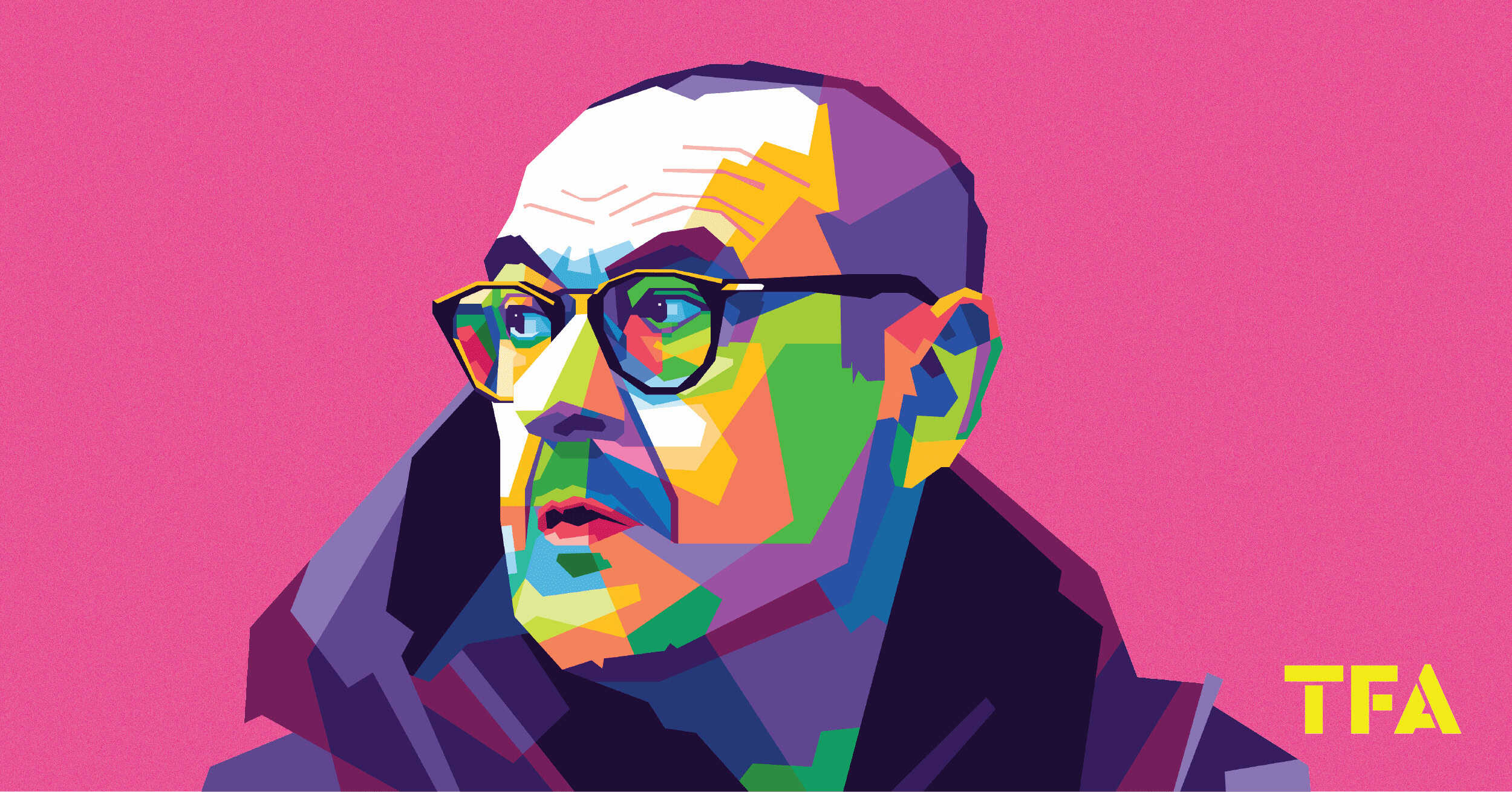




Comments